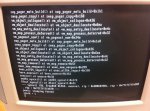FreeNAS is largely an administrative UI and featureset built on top of FreeBSD. Part of the goal is to build an appliance-style system that doesn't need to be endlessly twiddled, and there's a definite benefit to specifying a hardware baseline. However, fundamentally, FreeNAS can likely be made to work on anything that FreeBSD could also work on, and people have gotten ZFS working on systems with much less than 8GB of RAM using FreeBSD.
You should be able to get away with tuning; the question is mostly how to identify when your tuning has been successful in resolving crashes. This is problematic: is it "fixed" if you try something and it doesn't crash next Friday? Maybe it gets lucky and only close to crashing. That's the frustrating bit: you don't know if you've really solved the problem until you have several dozen Fridays under your belt. However - you can read multiple success stories on these forums of people tuning for 4GB or less, especially as some of the platforms that are popular for FreeNAS only accept up to 4GB (Intel Atom, etc). Pay attention to those lessons and you're likely to have success.
On the other hand, RAM is cheap, and if that's cheaper than your time and frustration, RAM appears as though it would solve your problem. Shooting for 8GB is a great idea. The 1GB/TB rule is going to be more meaningful if you have a really busy system, and you can probably safely downplay that a bit, especially if you don't mind the performance not being peak. Presumably an rsync backup system doesn't need to be super-snappy, it just needs not to crash.





